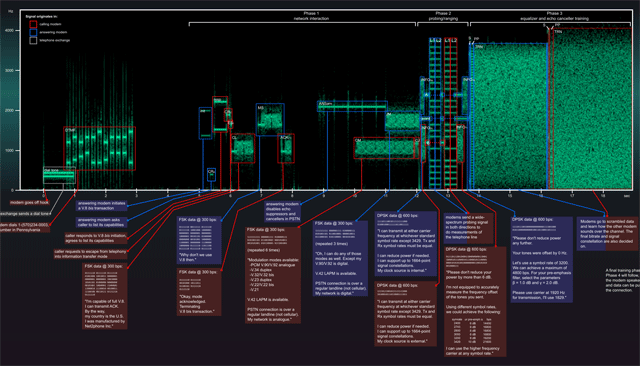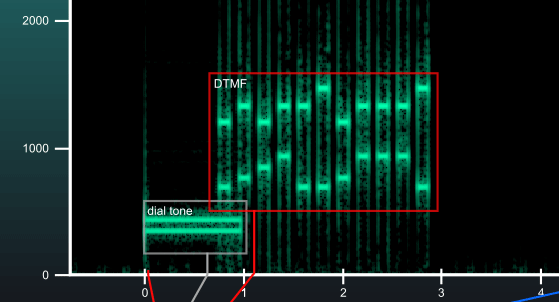Dialup sound

The Finnish engineer Oona Räisänen made a clear block diagram with a description of all the sounds that the dial-up modem makes when the connection is established. The horizontal axis corresponds to time in seconds, the vertical - the frequency of sound in hertz.
The description is superimposed directly on the spectrogram. For each sound, a source is marked (our modem or someone else's) and an explanation of what exactly this signal means.
For those who have forgotten the dialup modem connection sound, listen to it here or here. In the process of “shaking hands” when establishing a connection, two modems try to determine the most suitable protocols for exchanging data by testing a communication line between themselves. The maximum data rate depends on the protocols selected during the handshake.
The procedure begins with a dial tone — the same dial tone we usually hear on a telephone handset before dialing.

After receiving this signal, the modem dials a number using tone or pulse dialing. The spectrogram shows the tone set. Each digit corresponds to a pair of signals at a particular frequency. The modem dials the number in the same way as a regular telephone.
From the fifth second, the fun begins: modems begin to actively exchange “replicas”, telling each other about their capabilities and limitations. This is the beginning of phase 1 of the handshake process. The first phase is the longest, it usually ends around 12 seconds.

Then the modems arrange a session of simultaneous data transfer, checking the quality of the line (phase 2) and finally agree on an acceptable connection speed (phase 3).

After the end of the third phase, the dynamics of the modems are turned off - and it becomes possible to transmit data over the established connection.
The full size chart can be downloaded at Dropbox , Mirror , Russian translation ( Ocelot ).
